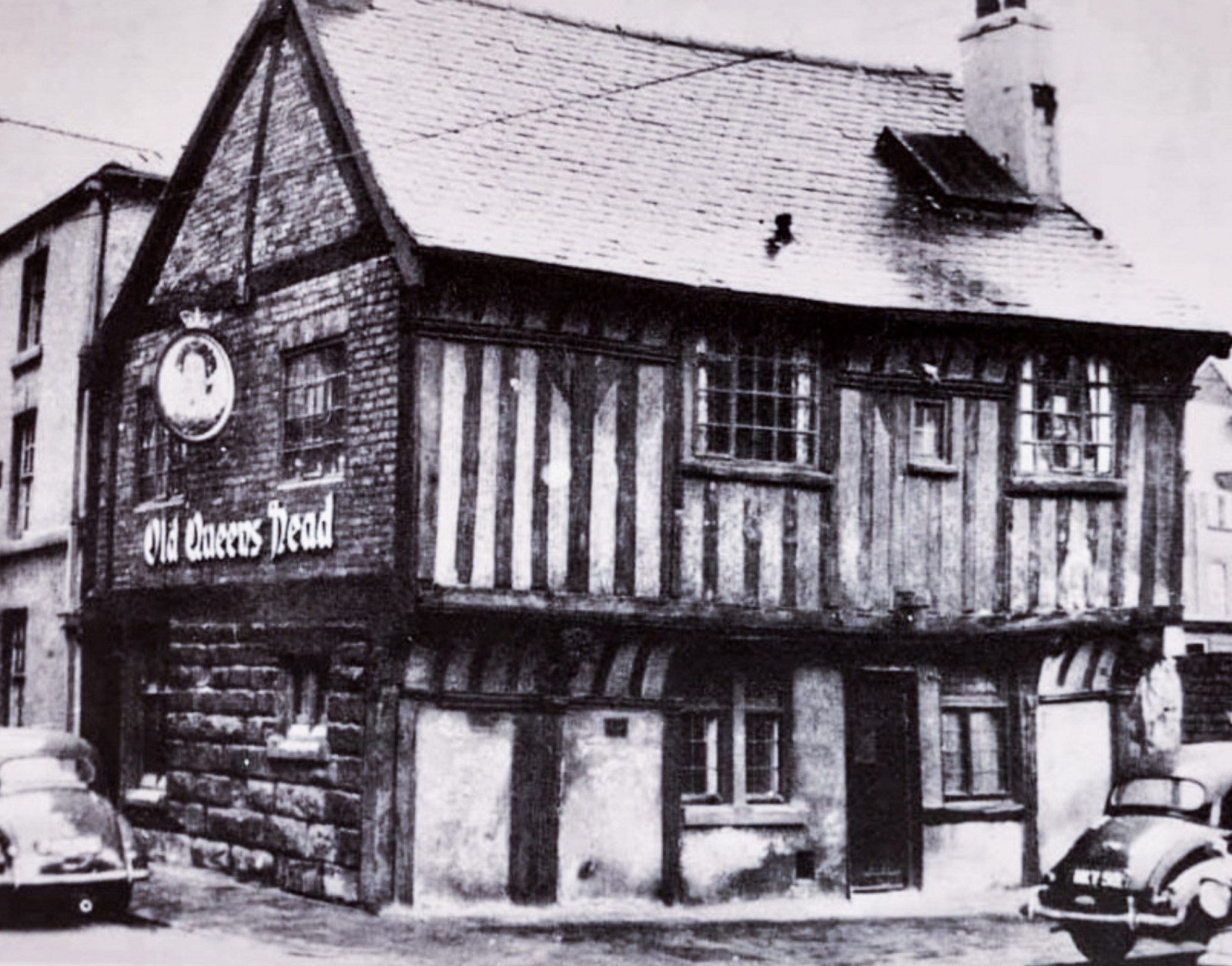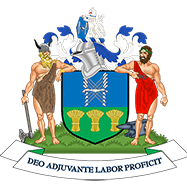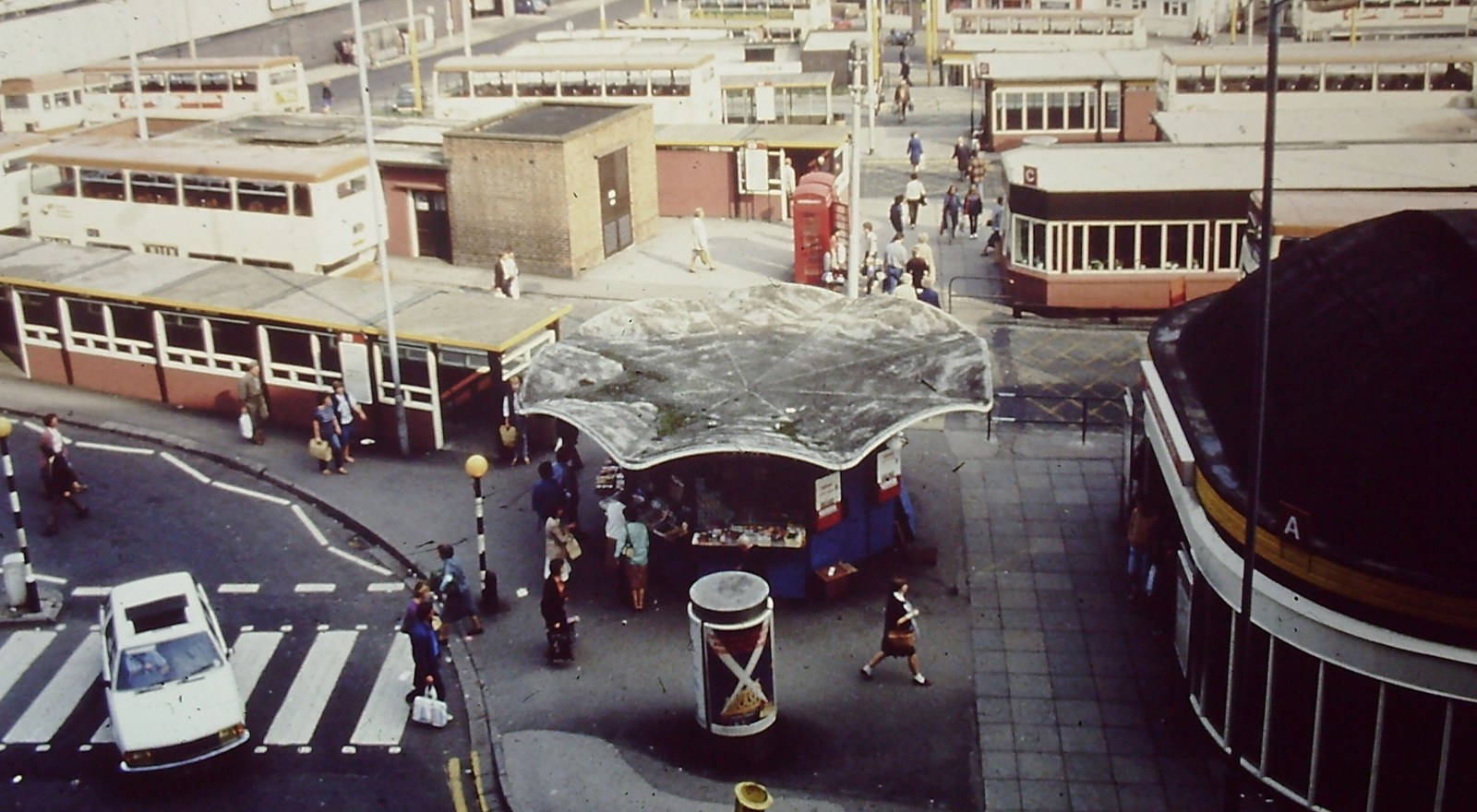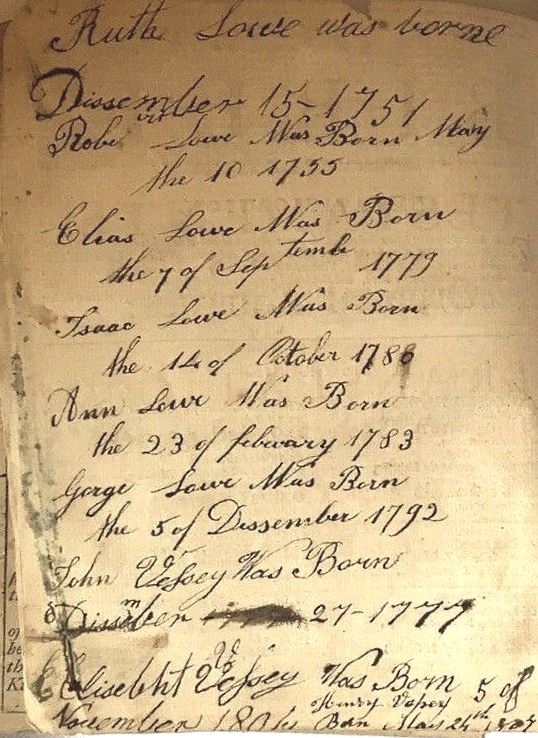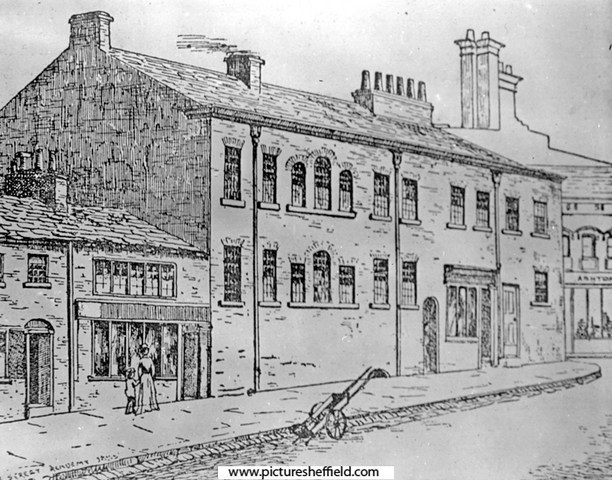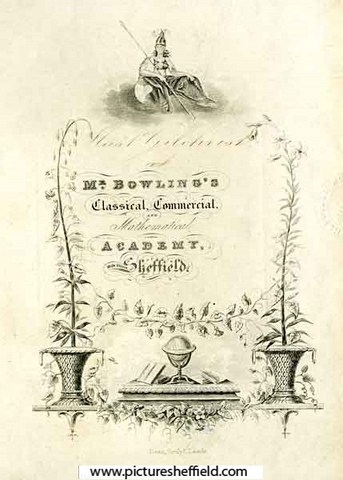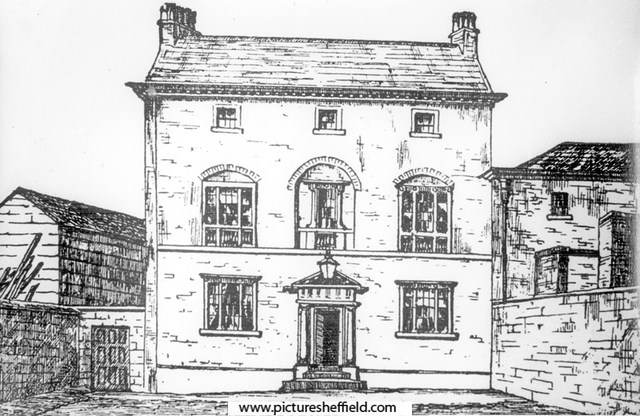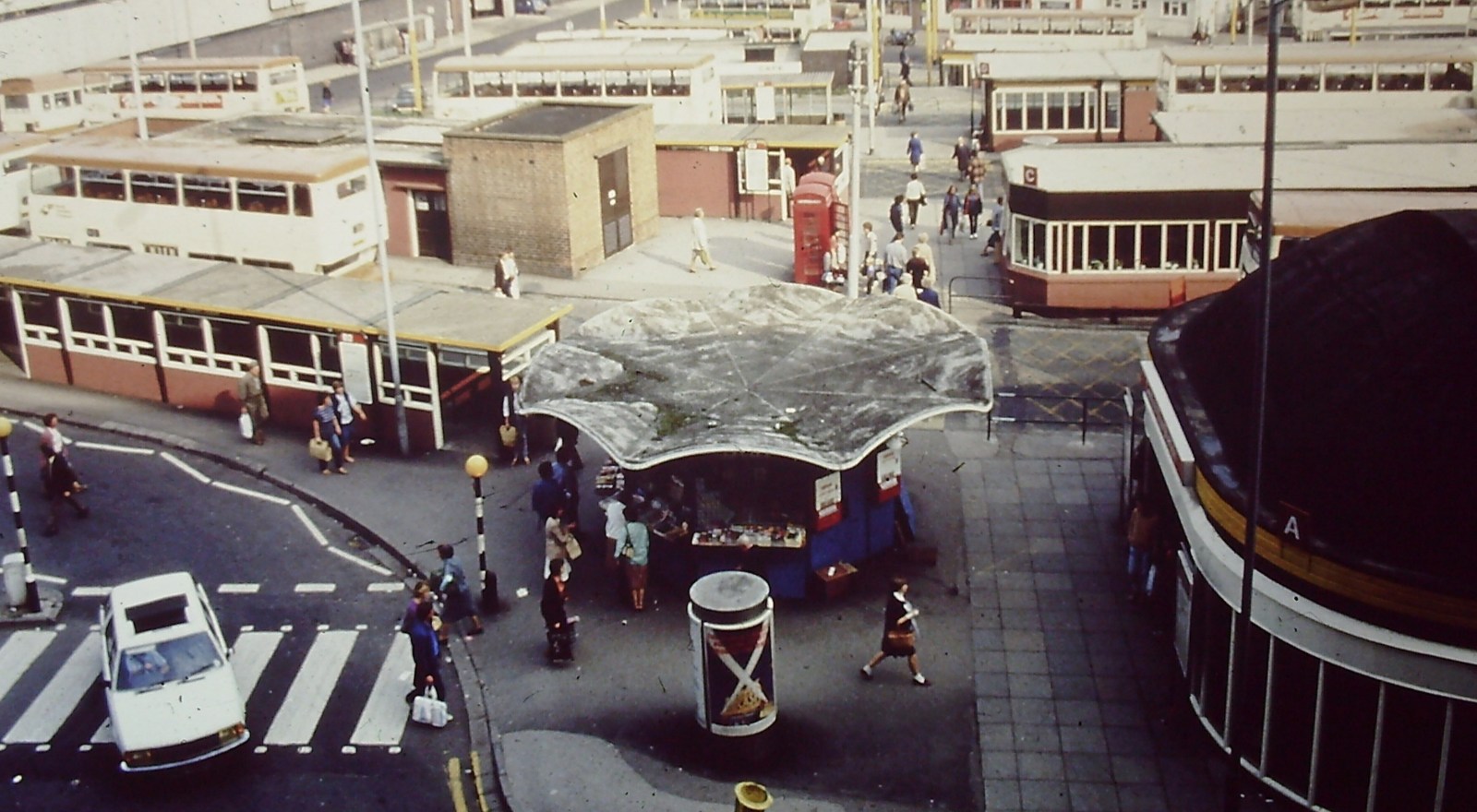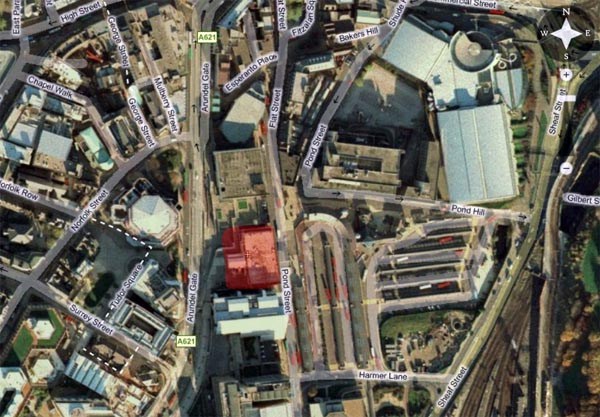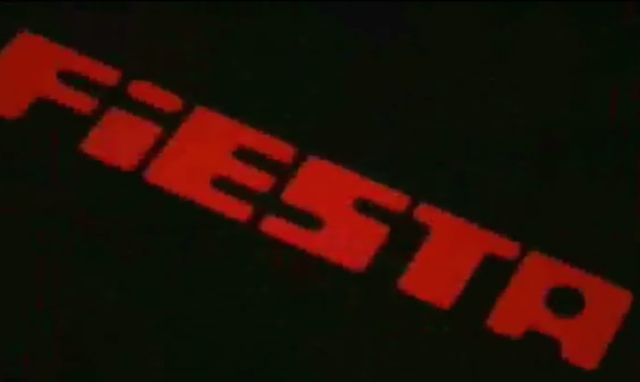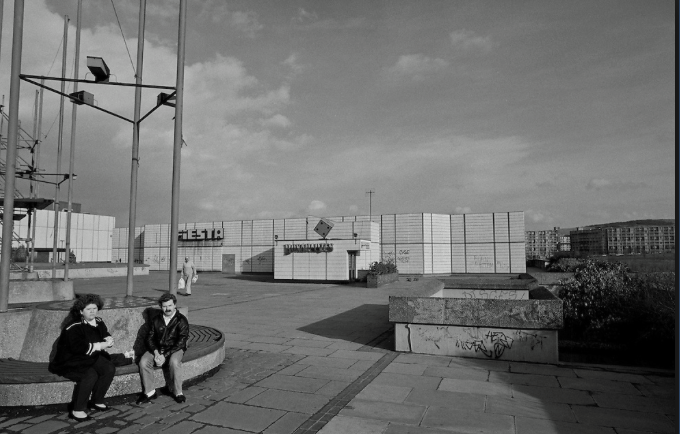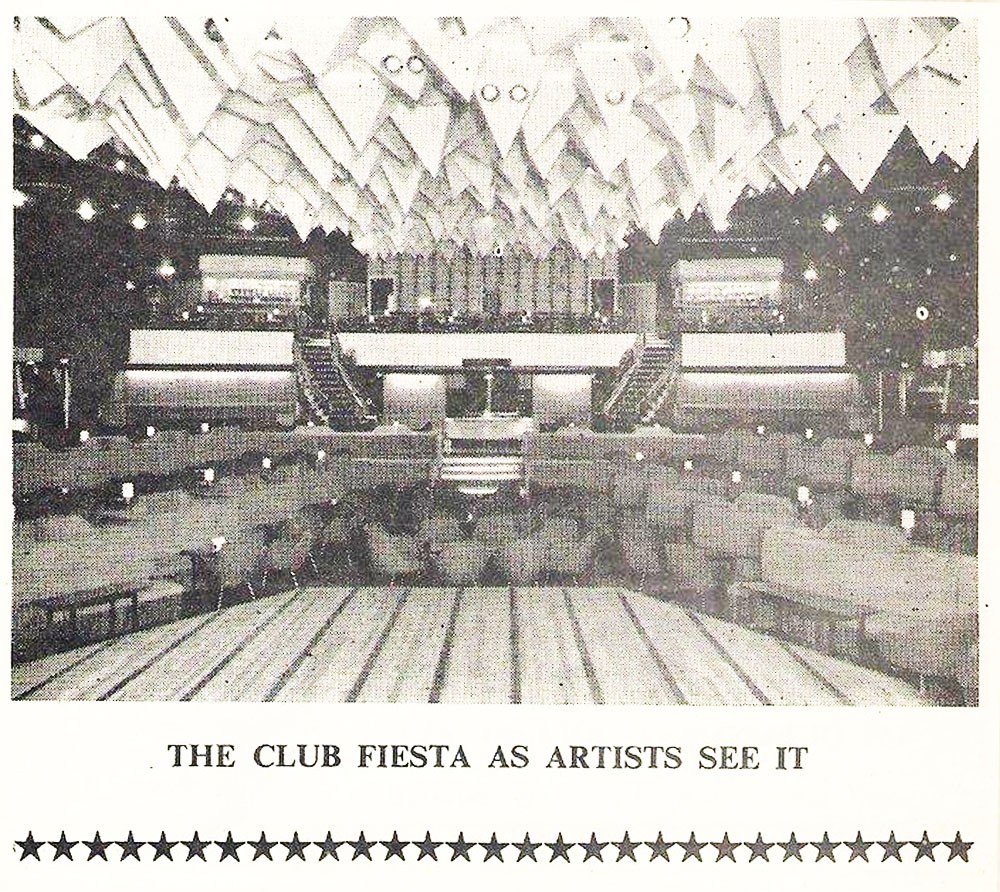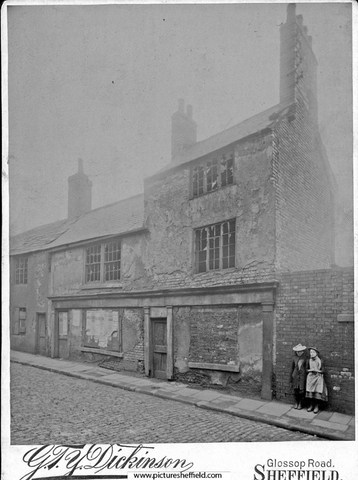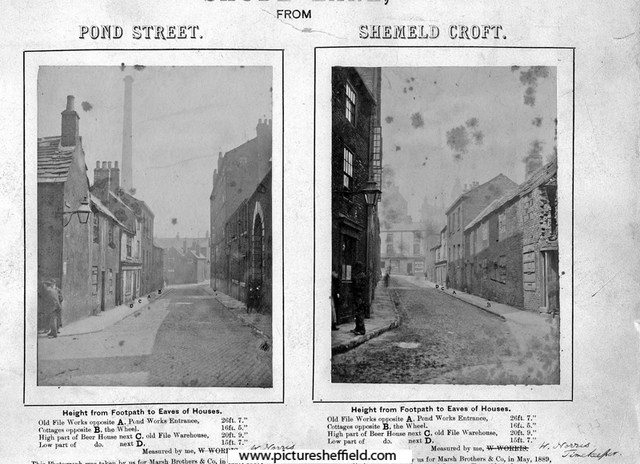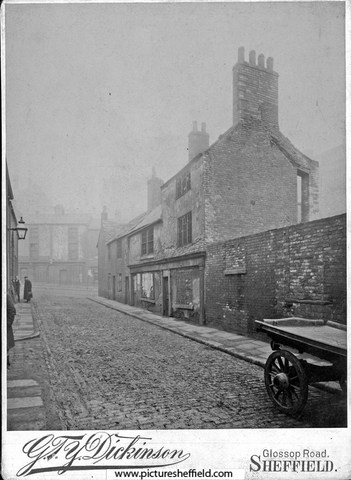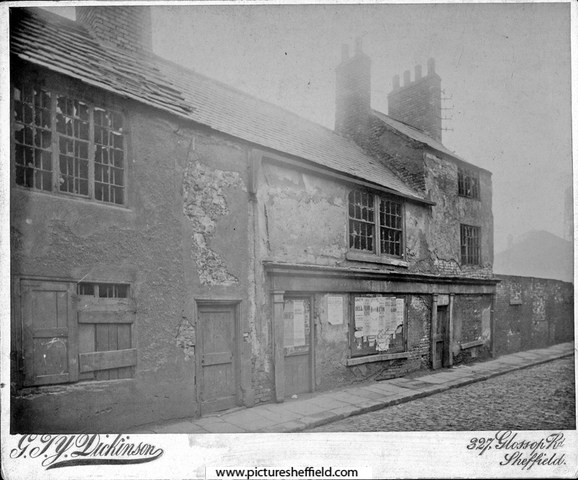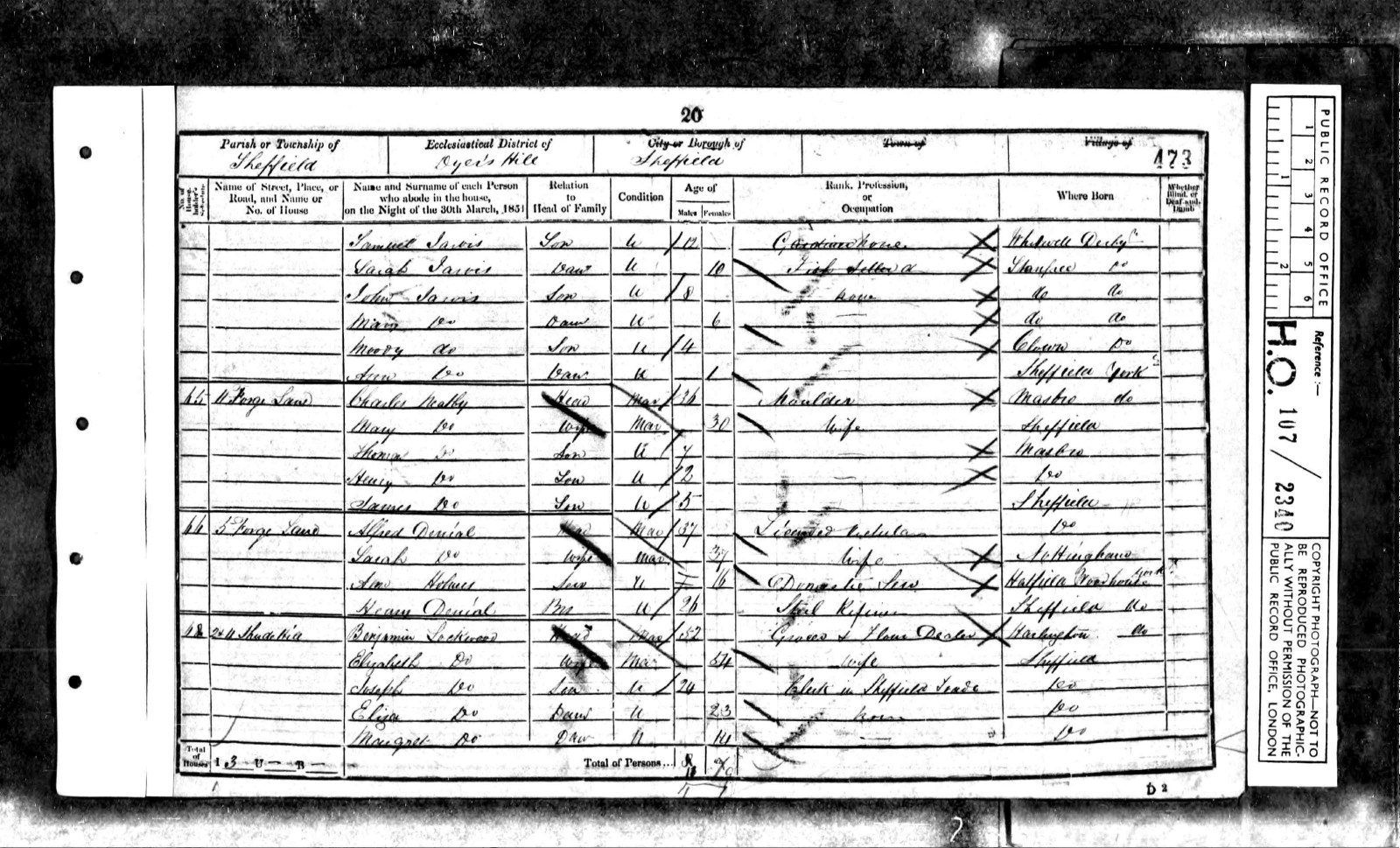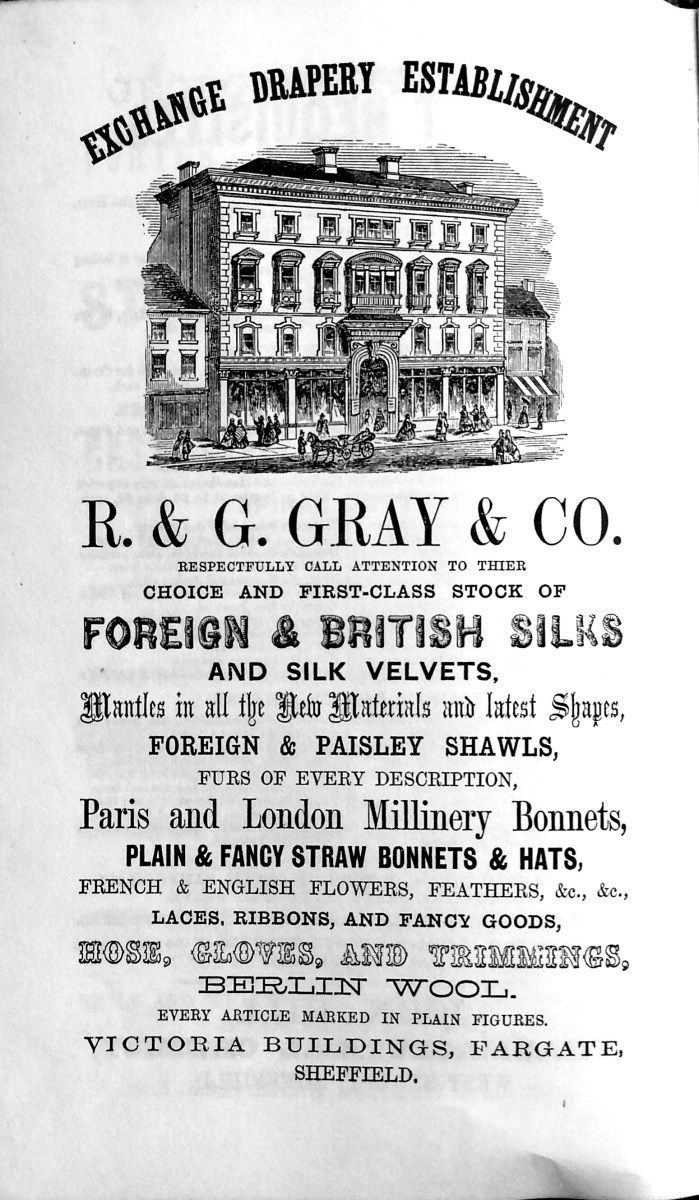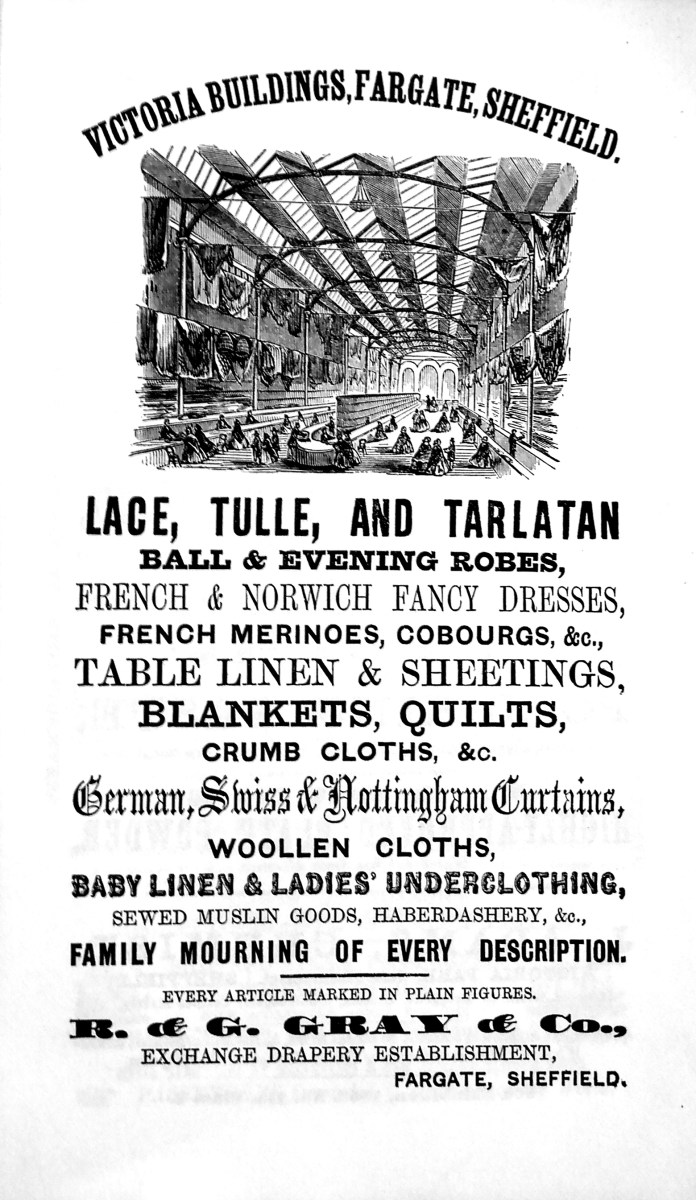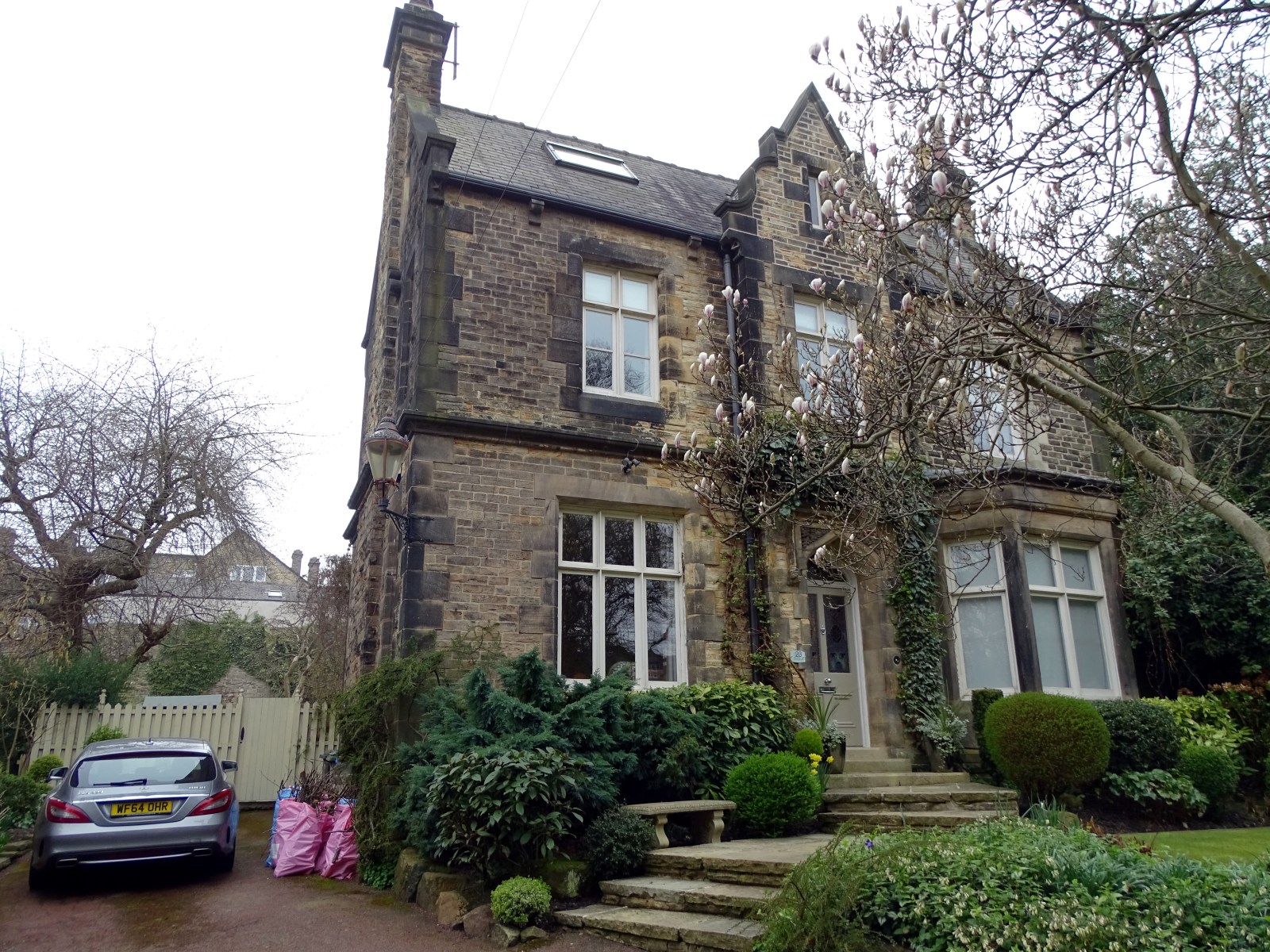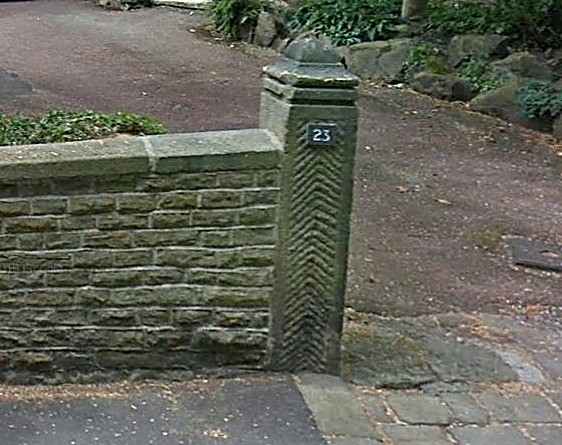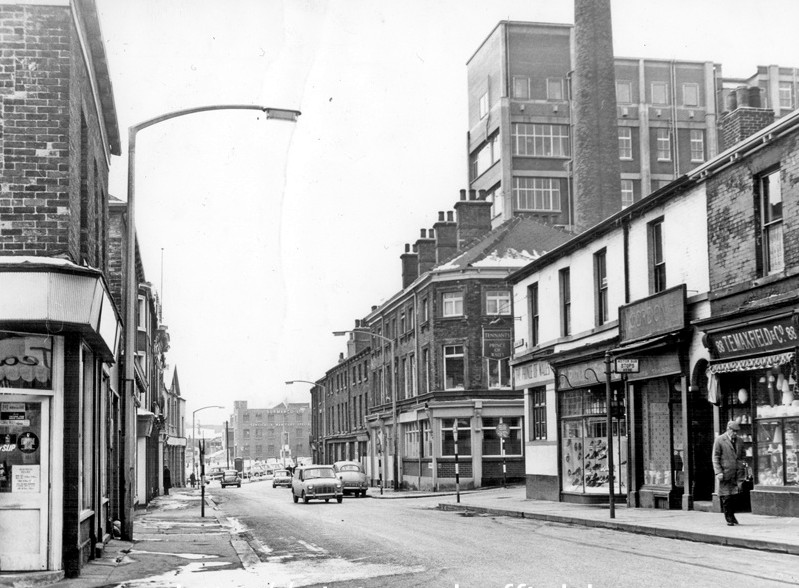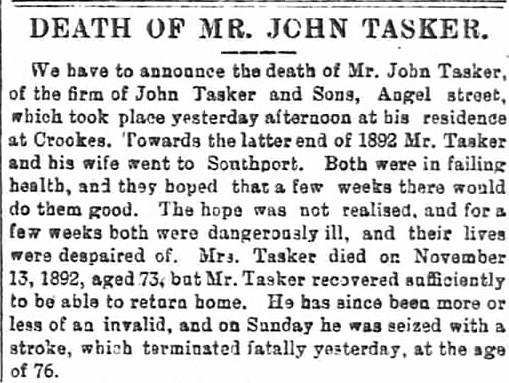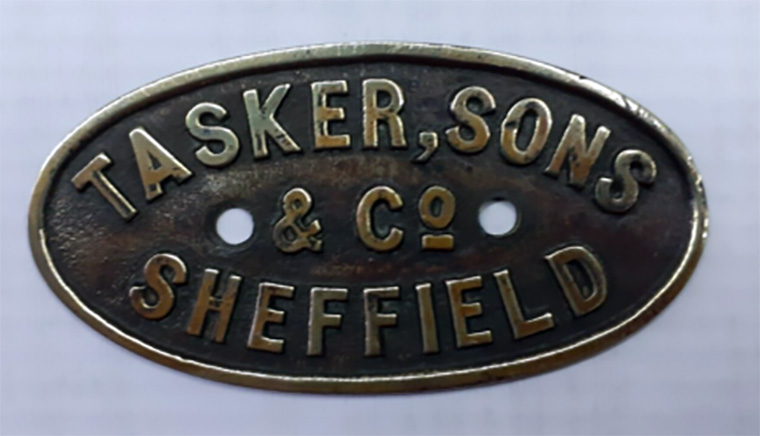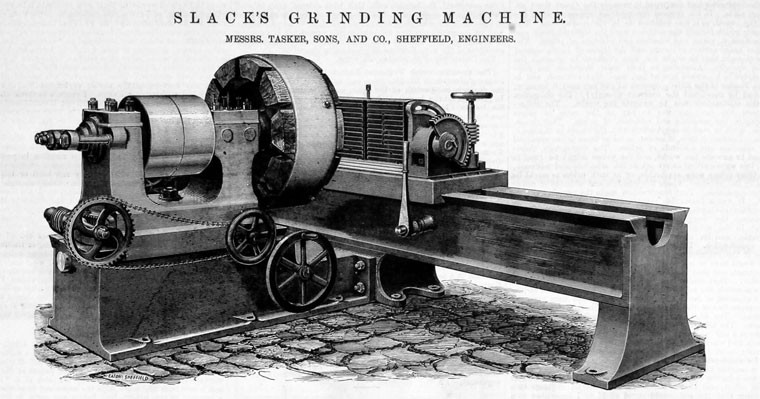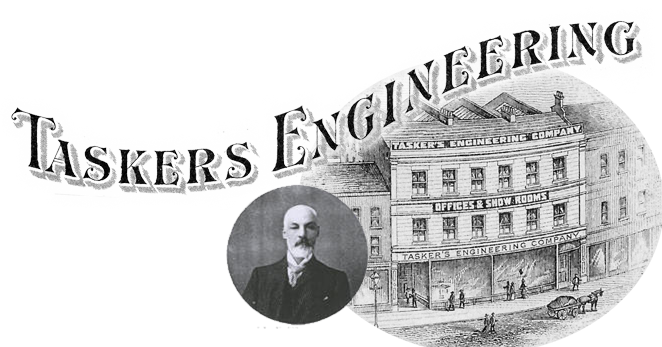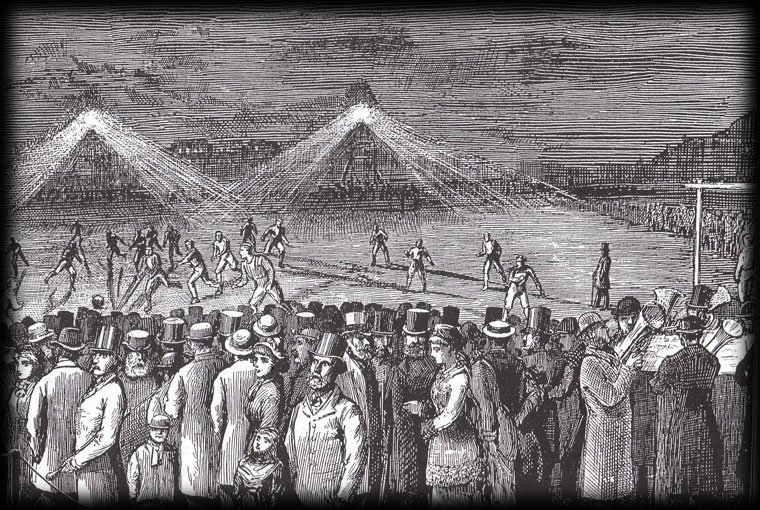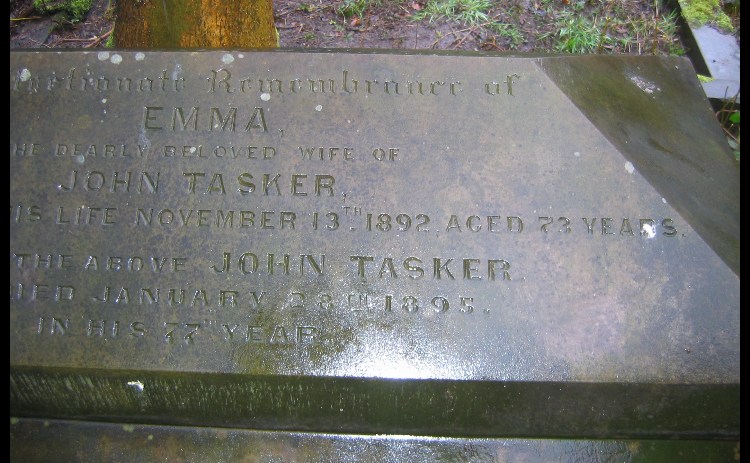Search the Community
Showing results for 'cherry pond'.
-
The Old Queens Head on Pond Hill next to Pond Street Bus Station in Sheffield Sheffield's oldest surviving domestic building and always the subject of many a rumour about tunnels up to the castle, and hauntings..
-
-
I recently purchased a family bible printed in 1728 which warranted further research as it contained a family tree. There were four families mentioned in the family tree and they were linked by marriage and one particular location (Sheffield's Cathedral, St Peter and St Paul's). The families mentioned are Higginbotham, Lowe, Vessey and Waller. I would like to return the bible back to any surviving members of the family with a genuine interest in history. I have tried to expand the family tree and have come up with the following which will inevitably contain many inaccuracies and omissions. Any help in getting things straight would be appreciated. Name DOB DOD Info/Source (Find My Past) Ruth Lowe (wife) 02/11/1751 04/01/1842 Ruth Higginbotham (baptised 26/12/1751 Chesterfield, father Isaac, mother not named) married Robert Lowe (1755-1829) on 15th November, 1778, at Chesterfield, Derby. According to the 1841 Census, Ruth and Robert had four children still living with them: Sarah (1779-) Isaac (1780-) Elias (1781-) Ann (1783-) The omitted child George, born 1792, was possibly married and not living in the family home at the time of the census. Ruth was buried 07/02/1842 St James, Sheffield. Ruth had a brother George, born 1760 Ruth’s grandfather was possibly Samuel Higginbothom, who married Ann Leah 03/03/1722 in Cheedle. Her great Grandfather may have been Guilielmus Hegginbothom, possibly born 03/12/1702 and baptised 02/09/1712 at Mellor. Guiliemus’ parents are listed as Johannes (died 1721 and buried 08/09/1721) and Mariae (possibly died 1745 and buried 18/12/1745), at Mellor. It is possible that Guiliemus was born almost immediately after sister Jana, who was born early 1702 and baptised on 28/03/1702 at Mellor It appears as if Johannes (Guiliemus’ father) also had a sister or very close relative, Jana, was married to Johannes Ward 10/02/1701 at Mellor. The name ‘Hegginbotham’ and variants is believed to originate in a very specific area in east Cheshire near Marple. It was recorded in 1563 as ‘Hyggynbothom’ in Prestbury, Cheshire. Robert Lowe (husband) 10/05/1755 --/--/1829 --/01/1806 Robert was buried on 01/07/1829 at St James, Sheffield Confusingly, there are two conflicting documents recording a burial for a Robert Lowe 07/01/1806, also at St James, Sheffield. Isaac Lowe was recorded as the next of Kin but on one document is recorded as ‘Father’ and on the other as ‘Son’ Sarah Lowe Possibly --/--/1779 --/--/---- Parents Robert and Ruth Lowe Possibly married Samuel Howe on 16/01/1825 at St Peter and St Paul, Sheffield Samuel was baptised 02/01/1785 at Sheffield, parents Edward and Mary Howe. Samuel was living singly at lodgings in Rockingham Lane, Sheffield, in the 1841 Census. No further information available Elias Lowe 07/09/1779 Possibly --/01/1864 Parents Robert and Ruth Lowe Baptised 26/09/1879 Chesterfield Married to Olivia Smilter on 08/12/1806 Sheffield PC Olivia (merchant clerk) died in childbirth 18/04/1810 and was buried 19/04/1810 at St Peter and St Paul, Sheffield Elias remarried to Sarah Dunn, age 30, on 18/08/1814 at Sheffield PC They had one child, Harriet, born 1816 and Elias mother, Ruth, was living with them (1841 Census) at Bank Street, Sheffield. Elias is recorded as a leather dealer by trade. Buried 24/01/1864 at Handsworth, Yorks. Isaac Lowe 14/10/1780 Possibly --/04/1851 Parents Robert and Ruth Lowe Baptised 05/11/1780 Chesterfield Married to Anne Middleton on 13/03/1803 St Mary’s, Ecclesfield, Sheffield Ann Lowe 22/03/1783 Possibly 11/04/1794 Parents Robert and Ruth Lowe Baptised 16/03/1783 Sheffield Buried St Peter and St Paul, Sheffield 11/04/1794 George Lowe 05/12/1792 Possibly --/--/1865 Parents Robert and Ruth Lowe Baptised 28/12/1792 St Peter and St Paul, Sheffield. Possibly married to Mary Turner on 19/10/1816, Sheffield (which may explain why he doesn’t appear on the 1841 Census at the family home) Possibly buried 03/01/1861 St Mary’s Sheffield Elias Lowe Possibly --/--/1808 Possibly --/01/1876 Parents Elias and Elizabeth Lowe Married Elizabeth Raynes 04/04/1826 at St Peter and St Paul, Sheffield. Daughter Elizabeth was born in 1842 and married in 26/08/1860 to a Frederick Broadley (born 1839, father named Richard Broadley*) at St Paul, Sheffield. Son in law Richard Broadly died in 1868 and was buried on 10/01/1868 at Worsbrough. The 1861 Census has them living at 1 Pond Street, Sheffield and they have a daughter Ruth Ann born in 1861. Elizabeth is described as a formerdress maker. The 1871 Census has Elizabeth living in the Lowe parental home once more with grandchildren Richard Broadley(1863), Frederick Broadley(1864) and Sarah Broadley (1869) Son Elias was born on 29/09/1843 and baptised on 28/09/1845 at St Peter and St Paul, Sheffield Daughter Olivia was born 29/06/1849 and was baptised 12/08/1849 at St Peter and St Paul, Sheffield Son Albert was born 1857 There is a possibility of another grandson Elias, born --/--/1864 and died --/--/1866. He was buried 29/04/1866 at Burngreave Cemetery, Sheffield Richard Broadley* 16/12/1815 Parents Samuel and Anne Broadley Baptised 14/01/1816 at St Peter an St Paul, Sheffield Widowed parent to son Richard Broadly who married Elias Lowe’s daughter Elizabeth on 28/06/1860 Anne likely dies in 1851 and was buried on 12/03/1851 at St Philips, Sheffield 1851 Census for 30 Dun Street, Sheffield Richard Broadley, widower, born 1815, trade glass cutter. Matilda Broadley, daughter, born 1837, house servant Frederick Broadley, son, born 1839, errand boy Richard Broadley, son, born 1843, scholar Mary Broadley, daughter, born 1845, scholar Isaac Broadley, son, born 1850, scholar Lionel Smilter Lowe 18/04/1810 Parents Elias and Olivia Lowe Baptised 03/08/1810 at St Peter and St Paul Sheffield. Lionel Smilter Lowe married Elizabeth Inkersell (born 1818 in Beighnton, Derby) on 08/10/1835. They lived in Elizabeth’s mother’s house (Mary) but he himself was described as a ‘proprietor of houses’ by trade. According to the details available there is no mention of children Olivia Lowe 04/03/1815 Parents Isaac and Ann Lowe Born 04/03/1815 – probably named in honour of Elias’ wife. Baptised 21/05/1815 St Peter and St Paul, Sheffield John Vessey (husband) 27/12/1777 --/07/1809 John married Ann Law on 17/07/1803 at St Peter and St Paul, Sheffield. John was buried on 05/04/1809 – he was a cutler by trade Ann Vessey (wife) --/--/1777 Father’s name Thomas Law. Ann was baptised on 04/05/1877 at St Peter and St Paul, Sheffield. Elizabeth Vessey 05/11/1804 Parents John and Ann Vessey. Baptised 21/11/1804 at St Peter and St Paul, Sheffield Elizabeth married James Wilkinson Gregory (born 05/03/1903) on 25/09/1826 at St Peter and St Paul, Sheffield. His parents Rebecca and Joshua Gregory had James Wilkinson Gregory James born 05/03/1803 and baptised on 14/05/1803 at St Peter and St Paul, Sheffield. Elizabeth and James apparently had a son, John Vessey Gregory born 12/06/1827, baptised 08/08/1827 at St Peter and St Paul, Sheffield. John may have married Eliza Coates on 04/09/1836 at St Peter and St Paul, Sheffield Eliza may have been born to parents George and Martha Coates on 09/03/1821 and baptised 11/04/1821 at St Peter and St Paul, Sheffield Eliza and James had a child, Eliza, on 23/04/2827 and she was baptised on 13/06/1827 at St Peter and St Paul, Sheffield. James’ wife Eliza may have died in 1855 and was buried on 04/11/1855 at Christ Church, Pitsmoor. Henry Vessey 24/05/1807 01/09/1831 Parents John and Ann Vessey. Henry (a leather dresser by trade) married Sarah Morton (b.1801) at St Peter and St Paul, Sheffield (19/06/1831) and they had four children according to the 1851 census: John (1834) Henry (1834) Ann (1837) Isabella (1839) Both John and Henry were steel workers and both Ann and Isabella were in domestic service. They were living in Neepsend Lane, Sheffield, at the time of the 1851 Census. By 1871 Henry and Sarah were living alone West Street, Sheffield. William Waller 13/07/1770 06/11/1839 William Waller and Ann Vessey married on 19/12/1809 Ann Waller 16/05/1812 17/06/1877 possibly Parents William and Ann Waller Baptised St Peter and St Paul, Sheffield. William Waller 10/02/1814 Parents William and Ann Waller Ellen Lowe Waller 14/05/1822 --/04/1828 Parents William and Ann Waller Baptised 19/06/1822 at St Peter and St Paul, Sheffield Ellen was buried 09/04/1828 at St James, Sheffield William was recorded on the burial records as a carpet weaver by trade. Henry Burgess Waller --/--/1840 Burgess was the mother’s maiden name, Waller the father’s. The birth was recorded in Madeley, Shropshire. George Highinbotam (see other spelling variations) -- /08/1760 Possibly 04/07/1836 Brother to Ruth Lowe (nee Higginbotham) Baptised 27/12/1760 Chesterfield, Derbyshire. Possibly married to Ann Newman (residence noted as St Verdust’s Foster Lane, London) 28/06/1779 in Sheffield George’s brother, Isaac Higginbotham, was baptised 07/11/1756 Chesterfield, Derbyshire. Gerorge’s father Samuel Higginbotham baptised 28/06/1724 Chesterfield, Derbyshire. George buried in Chesterfield, Derbyshire Geographic connections: Lowe family and Vessey family – Sheffield, Yorkshire. Waller familyand Higginbotham family – Beighton, Rotherham, Derbyshire. Social connections: Higginbotham and Lowe families linked by marriage in 1751. Waller and Vessey families linked by marriage 1809. Waller, Lowe and Vessey families all attended St Peter and St Paul, Sheffield Cathedral.
-
Milk Street Academy. s06474 Brief History of Milk Street and the Academy https://sheffielder.net/2022/11/03/milk-street-swept-away-by-the-construction-of-arundel-gate/ Book Plate for Mr Bowling's Classical, Commercial and Mathematical Academy, Milk Street, Sheffield. y06440 Original at Local Studies MP 6443 M. Leeds Library Special Collections, Milk Street Academy ( Sheffield) https://explore.library.leeds.ac.uk/special-collections-explore/participant/68118 Includes Milk Street Academy. https://blogs.princeton.edu/cotsen/2017/05/good-job-reward-books-from-early-19th-century-english-schools/ Milk Street from Norfolk Street, Nos. 43-45 Harry Hartley and Son Ltd., hardware store (former Milk Street Academy). February 1964. https://www.picturesheffield.com/frontend.php?keywords=Ref_No_increment;EQUALS;s17929&pos=7&action=zoom&id=20613 https://www.picturesheffield.com/frontend.php?keywords=Ref_No_increment;EQUALS;s17930&pos=8&action=zoom&id=20614 A Plan of the Tenements and Ground held of the Earl of Surrey by the Heirs of the late John Trout and assigned by them to John Schofield containing in the whole 398 yards, 1778. Surveyor: William Fairbank II. Property on the corner of Norfolk Street and Milk Street, including the School House (1771 Petticoat Lane); erectors of buildings named; measurements. https://www.picturesheffield.com/frontend.php?keywords=Ref_No_increment;EQUALS;arc03211&pos=22&action=zoom&id=98297 A plan of the tenement and ground held of the Earl of Surrey by the heirs of John Trout and assigned by them to John Schofield. 1778. https://www.picturesheffield.com/frontend.php?keywords=Ref_No_increment;EQUALS;arc03656&pos=23&action=zoom&id=99206 A Plan of the Sundry Tenements [property] of the Earl of Surrey in Norfolk Street, Arundel Street [Sycamore Lane] and Pond Lane. 1780. https://www.picturesheffield.com/frontend.php?keywords=Ref_No_increment;EQUALS;arc04171&pos=25&action=zoom&id=104512 Shows Norfolk Street, Arundel Street, Bowling Green Lane, Pond Lane, Pond Mill Dam, Shude Hill, road to Pond Mill, Slaughter House Lane, Milk Street, Pond Well, Pond Well Hill, and Change Alley. Note: Sycamore Street is named Arundel Street on this plan; probably by a mistake, as the Arundel Street shown on FC/P/SheS/745 (1787) is the same as the modern street. Tenants: Joseph Ibberson, Joseph Mitchell, Ann Genn, Thomas Siddall, Margaret Nutt, Mary Naw, Robert Higginbottom, John Schofield, Eliz. Dickinson, John Linthwaite and sister, Eliz. Rodgers, Titus Salt, George Clark, James Kaye, Thomas Pearson, Robert Baxton, Thomas Lambert, John Hammond, John Walter, Thomas Laycock’s heirs, William South, Edward Hawke, Josephus Parkin, John Greaves, Thomas Law’s heirs, Thomas Darwin, Samuel Shepley, Thomas Wilkinson, The Whitelead Co., The Widow Newton, Samuel Broomhead, Robert Lambert, George Badger, Jonathan Hale, Joseph Hall, Sarah Chapman, William ?, Robert [Unwin], John Parkes, Richard Wilson, and others (illegible). The property which became John Schofield property is The Unmarked Property between Benjamin Damms & Milk Street was later part of the Milk Street Academy. Property between Norfolk Street and Sycamore Street, occupied by Benjamin Damms, John Barber and George Dalton, 1828. https://www.picturesheffield.com/frontend.php?keywords=Ref_No_increment;EQUALS;arc04173&pos=21&action=zoom&id=104514 Shows: Milk Street, Mulberrry Street, George Street, and Sycamore Street.Tenants / owners: Benjamin Damms, John Barber, George Dalton and Thomas Caverley. Extract from: Reminiscences of old Sheffield, it's Street and its People. From letters Editor Robert Eadon Leader, from articles and letters in The Sheffield and Rotherham Independent 1872/3. Page 247-248. Wragg: ..... Near, in Milk Street, is Mr. Bowling's School, celebrated as being kept by the late Mr. J. H. Abraham, who, besides having the best school in the town, was of a mechanical turn of mind, for in 1822 he invented a magnetic apparatus for the protection of persons employed in dry grinding. Twiss: A testimonial was presented to him in that year, "in token of respect for his talents, and in acknowledgment of his services to an afflicted class of workmen by his ingenious invention;" and he also received the gold medal of the Society of Arts for the same invention. Johnson: Like many other things that are theoretically sound, the magnetic apparatus was practically useless. The great complaint against it was, I believe, that it was speedily choked with the fragments of metal attracted, and then the respiration of the workman was distressingly hindered. Holy Green House, The Moor, between Eldon Street and Prince Street. Home of Thomas Holy, who entertained John Wesley there. Mr. Abraham, principal of Milk St. Academy, resided here, also used for boarders and evening classes y01674 Thomas Holy, a member of a very old Sheffield family of manufacturers and merchants lived at Holy Green House which stood in a large garden, with a long green lawn in front, on Sheffield Moor, between Eldon Street and Prince Street. Mr Abraham, the Principal of the Milk Street Academy, had Holy Green House for boarders and evening classes. Mr Abraham also resided here, but left in 1839. It was afterwards used by the Sisters of Notre Dame prior to their premises in Convent Walk. In 1870 it was the Ecclesall Club.
-
Stopped for a coffee and a look around the redesigned Square in 2022. I pointed out to my wife the relief carvings on the White Building depicting the various Sheffield Trades. It was in 1961 when I first noticed the carvings, while sitting on the wall waiting for the plumber I was apprentice to, arrive, we got to the jobs by bus back then and it was my job to carry his bag of tools around, remember putting the tool bag under the stairs at the back of the bus and being told to sit there and keep your eyes on em, while I go upstairs for a smoke. Remember catching the football specials back into town from Hillsborough, getting off in Fitzalan Square and running down into Pond Street with my mate swinging his football rattle all the way along the bus shelter on our way to catch the bus home. " Yes there was a time when Wednesday used to win"
-
Why did they knock down the Barclays bank building? A very impressive structure. Nothing that has been built there since can match its grandeur. One of my favourite areas in the city centre. I used to work at Prestos supermarket overlooking Pond Street. Used to catch the Number 4 bus from outside the Marples to get home. Always remember the shoplifters always used to end up in the Marples trying to sell their ill-gotten gains.
-
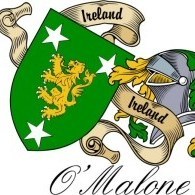
Suicide of Henry Tomlinson owner of the Hope & Anchor brewery Cherry Street.
tozzin posted a topic in Sheffield History Chat
Written on the 11/5/2014 Before I start this excursion into past history, I must thank Mr Chris Hobbs for giving me the nod to glean information from his website about Mr Henry Tomlinson, this account can also be read in his book which was co written by Mathew bell, “Sheffield’s Shocking Past”, I must also thank Edmund on the Sheffield History Forum for enlightening me on the sale of 443 Shoreham Street. The Plaque shown in the clue picture did throw me for a while until Edmund made things much clearer, it does seem to read Ern Lea Place but it seems as thought the elements have eroded the “F” and part of the “”R” to make it look like a “ P” from what is “ Fern Lea Place”, a sale of the houses that was published in the local paper read as follows, MESSRS- WILLIAM BUSH AND SONS. Five houses, called Fern Lea Place. Nos. 441 to 449 Shoreham St.. were sold Messrs. Wm. Bush and Sons this afternoon for £1.150. The property produces £33 annually - 3rd December 1901 - Sheffield Evening Telegraph. And for some reason the Victorians had a penchant for naming villas and blocks of terraces, and one of their favourites was Fern Lea, why I cant say, there were many in Sheffield, as elsewhere. The first mention in the papers was one at Burngreave (Alfred Sharman who lived there had a son in 1878), other examples were at 52 Wostenholm Road, Bocking Lane and Cowlishaw Road. In 1905 Samuel Cramer-Suckley, Professor of Music and Bandmaster of the Yorkshire Hussars lived at the latter. Further along Shoreham Street a very disturbing and sad event occurred on Friday June 19th 1891 at No 327 Shoreham Street, the home of Mr Arthur Podgson, the following is an brief account of what happened that terrible day. It involved Mr Henry Tomlinson who was the owner of the Anchor Brewery that was situated on Cherry Street, his Brewery was one of the largest and most successful of over 52 Breweries that operated in Sheffield in the 1800s, the events leading up to Henrys suicide, were noticed by his family and friends as they noticed a change in his once calm demeanour which changed into a consuming mania, it was feared weeks prior to his final act that he would attempt to take his own life, in hind sight he should have been placed in to some kind of mental care, Henry resided at Woodlands, Dore New Road along with his Wife Martha aged 44 and four children, during the Thursday night Henry had been in a very agitated and restless state, his eldest daughter was present in the early hours of Friday the 19th of June, she was very worried about her Fathers state of mind and sent for Henrys Solicitor, Mr D.H. Porrett who lived a short distance away, Mr Porrett sat with Henry for around three hours trying to convince him to get some sleep but to no avail and at six o’clock that morning Henry left his home and walked to Sheffield, on reaching his Brewery he insisted that the gates were locked as in his state of paranoia he was convinced that several persons were trying to get hold of him, at around nine o’clock that morning he went to Mr Arthur Podgson`s (his Cashier) home, No 327 Shoreham Street, he asked for a cup of tea and laid down on the sofa and when Mr Podgson had left the room Henry jumped up and tried to force it down his throat, this spoon was taken away from him, he then walked into kitchen where he picked up a knife and tried to cut his own throat but this was wrestled away from him but in the melee Mr Podgsons hand was severely cut, with the result he collapsed through loss of blood, he was then taken to a nearby Chemist to have his wounds bandaged, this gave Henry the opportunity to rush into the kitchen once more, closed the door behind him a couple of moments later Mrs Podgsons wife pushed the door open only to see a large pool of blood on the floor, she also heard Henry making a gurgling sound, she ran to the Anchor Brewery for assistance, two workers returned with her to find Henry had cut his jugular Vein and his Windpipe, a certain Doctor Hunt was sent for and he pronounced life was extinct and his death was very quick by nature of the wounds. Below is the newspaper reports of the time on Henrys suicide: THE SUICIDE OF A SHEFFIELD BREWER - Henry Tomlinson 19th June 1891 The papers Freeman's Journal and Daily Commercial Advertiser (Dublin, Ireland), Saturday, June 20, 1891; and The Belfast News-Letter (Belfast, Ireland), Saturday, June 20, 1891 both carried a report on the death of Mr Henry Tomlinson, proprietor of the Anchor Brewery Sheffield which at the time was one of the largest in the region SUICIDE OF A BREWER London Friday Mr. Henry Tomlinson of Sheffield one of the largest brewers in Yorkshire committed suicide today by cutting his throat and a coachman who tried to wrest the knife from him was terribly cut about the hands The Glasgow Herald (Glasgow, Scotland), Saturday, June 20, 1891; Issue 147 gave a more detailed account under the title SHOCKING SUICIDE AT SHEFFIELD Yesterday morning, Mr. Henry Tomlinson one of the largest brewers in Yorkshire and proprietor of the Anchor Brewery Sheffield committed suicide by cutting his throat. Mr. Tomlinson had not been well for some time, and recently had been watched. His manner for the last day or two had been strange and yesterday morning on arriving at the brewery, his actions led everyone to believe that he was not in his right mind. He was taken to the house of his cashier and whilst the latter went to see Mr Tomlinson's brother, the deceased got a knife out of the kitchen A fierce struggle took place between the suicide and his coachman but by a terrible effort the deceased pulled the knife out of the coachman's hand so badly that he fainted through loss of blood. On getting free Tomlinson rushed into the scullery and forcing the knife into his throat made a terrible gash, the jugular vein and the windpipe both been cut. Death occurred in a few moments. Deceased leaves a widow and four children The Anchor Brewery was located on Cherry Street a site that was occupied by Arnold Lavers wood yard The brewery was severely damaged during the Sheffield blitz At the other side of the Sheffield United ground was Britannia Brewery (John Richdale), they were taken over by Hammond's of Bradford in 1956. A Flats and Office complex now occupy the site of the Brewery, the Brewery’s Anchor logo was removed not to long ago and the only hint the Brewery is in the name of the building “Anchor Point”. A fuller account of this story can be found in “Sheffield’s Shocking past” by Chris Hobbs & Mathew Bell. -
The Howard Family Tree saga. Wanting to know about the best search advice. My direct VDL Convict relations - Margaret Howard b Dublin c1798, husband John or Andrew ?Two children - Mary and John through newspaper court results lived in Pond St., Sheffield. from 1820's to c 1845. Margaret and her two children eventually ended up in Hobart due to their illegal activities (not a good life). Am 'new' to this searching 'English and Irish genealogy' stuff and have practically exhausted my leads here in Australia. 1. Firstly, Is there a census record for that time range and can l access it? That could probably confirm they did live in that Street l hope. The landlady confirms in the court case they lived in and swapped houses at one stage (Margaret and Mary) c 1838. 2. l do have their VDL records but they are a bit brief when it comes to their pre conviction life. What would be the best search sites to investigate ? 3. l am aware of the very numerous Howards with same names in that timeline. The Sheffield Times court reporting of their appearances locate them to Pond St. Should l do more paper searches? 4. lf she was born in or near Dublin l need to know her maiden name, when and where she got married and her confirm her husband's first name. John, Andrew or other. 5. Would be happy to hear from anyone who could toss up some productive ideas Mike Howard A 'proud' descendant of 'Convict stock' Far North Queensland Australia
-
Gardens in the Ponds. Gardens let to sundry persons by the Pond Forge Co., [Pond Street, 1783] https://www.picturesheffield.com/frontend.php?keywords=Ref_No_increment;EQUALS;arc04205&pos=1415&action=zoom&id=105170 A plan of several gardens in Pond Lane held by sundry persons of the Duke of Norfolk, and a plan of the course of the pipe conveying water from the Bath through them to the White Lead Works, [1777] https://www.picturesheffield.com/frontend.php?keywords=Ref_No_increment;EQUALS;arc04203&pos=1413&action=zoom&id=105138 A plan of part of the Ground before the Bath Garden in Pond Lane. 1772. Property west of Pond Street, showing part of the [Pond Street Cold Bath] and its garden. https://www.picturesheffield.com/frontend.php?keywords=Ref_No_increment;EQUALS;arc03131&pos=903&action=zoom&id=98127 A plan of several gardens in the Pond Lane held by sundry persons of the Duke of Norfolk. 1777 Property between Pond Street and the Tilt Dam. Plots numbered and listed with tenants, yardages and short descriptions. https://www.picturesheffield.com/frontend.php?keywords=Ref_No_increment;EQUALS;arc03134&pos=906&action=zoom&id=98131 A plan of the Tenements, Gardens and Ground in Pond Lane held of the Duke of Norfolk by William Webster and by T. Marshall and E. Challoner, [1775] Tenements on the west side of Pond Street, but including the Fish Pond and garden on the east side; buildings, coal yards, etc. named; an 'ancient watercourse' marked, and proposed street widening. List with tenants. https://www.picturesheffield.com/frontend.php?keywords=Ref_No_increment;EQUALS;arc03132&pos=904&action=zoom&id=98129 Plan of the Houses, Garden and Ground in the Ponds held of the Earl of Surrey by James Matthew man. 1780. https://www.picturesheffield.com/frontend.php?keywords=Ref_No_increment;EQUALS;y09228&pos=669&action=zoom&id=63622
-

Arundel Gate (Odeon / Fiesta) Pond Street subway / underpass.
chri5 posted a topic in Sheffield History Chat
Still there but inaccessible. The spiral staircase from Pond Street is gated halfway up and the Tank nightclub occupies the old subway at the top. I took these photos in September 2009, I believe it was sealed off shortly afterwards. If you rewind time on Google Maps street view you can see a notice blocking the stairwell at the Odeon entrance in 2011. This underpass led out to a covered walkway that stretched all the way around to the top of Howard Street and was a graffiti hotspot. This was sealed off when the Adsetts building was built. You can still see some of the old walkway but it is now a bicycle park for the Adsetts & Owen buildings. This underpass also ran underneath Arundel Gate across to the Lyceum Theatre originally but that part was sealed off in the late 80s? Does anyone have any photos of the old covered walkway? -
Who was Pond Street Nora? Why is she famous amongst Sheffield people? Details required please (if not already on here).
-

Alfred Green, Manufacturer of Edge Tools, Knives etc., Pond Street
Ponytail posted a topic in Made In Sheffield
Alfred Green, manufacturer of edge tools, knives etc., Pond Street. Advertisement from Illustrated Guide to Sheffield, Pawson and Brailsford 1862. Whites Directory 1833. Green, Alfred, edge tool, curriers knife, surgeons instrument, truss, stomach pump syringe. Residing at 29, Pond Street. Whites Directory 1837. Green, Alfred, edge tool, currier & tanners knife, surgeons instrument, truss, stomach pump, syringe, ear trumpet etc. manufacturer, 29 Pond Street. h Cherry Mount. Slaters Directory 1846. Green Alfred, edge tool maker, Pond Street. Sheffield Directory 1852. Green, Alfred, edge tool, tanners' and curriers' knives, surgeons' instrument, patent truss, file, steel etc. manufacturer, 86 Pond Street. h. Cherry Mount. Advertisement Melville Directory 1859. -
A map of Cinderhill Wheel Old Dam and the additions intended to be made to it. 1752. https://www.picturesheffield.com/frontend.php?keywords=Ref_No_increment;EQUALS;arc03406&pos=91&action=zoom&id=98649 The old and new dams clearly shown, with a perspective drawing of the mill house. Measurements given on the map and there is an explanation of additions with acreages. Content of the new dam also given; house and border coloured. Pond Corn Mill (on the Porter) and some of the Stand Ley Closes (also known as the Cinder Hill Wheel, this Mill was west of modern Leadmill Road near Shoreham Street; the Stand Ley Closes lay to the south and west of the mill and dam). Brittain Street, St Mary's Road, Shoreham Street, Pond Corn Mill, Mary Street, Pond Street (south end). A map of the Stand Leys and some other contiguous Lands with the Dam and Mill (formerly called Cinder Hill Wheel) 1764. https://www.picturesheffield.com/frontend.php?keywords=Ref_No_increment;EQUALS;arc03415&pos=93&action=zoom&id=98651 arc03415 The Wheel and Dam clearly shown; shuttle marked; colours distinguish tenancies; numerical list with tenants, field names and descriptions and acreages; on parchment. Pond Corn Mill (on the Porter) and some of the Stand Ley Closes (also known as the Cinder Hill Wheel, this Mill was west of modern Leadmill Road near Shoreham Street; the Stand Ley Closes lay to the south and west of the mill and dam). Clough House Lane, with the site of Clough House shown. Lenton Street, Duchess Road, Pond Corn Mill, Mary Street, Margaret Street, Matilda Street, Pond Street (south end), St. Mary's Road.
-
THE FIESTA CLUB LOCATION Sandwiched between Arundel Gate and Pond Street PICTURES The Whiteman Brothers Live At The Fiesta FACTS The Fiesta Club had a resident band - this was "The Terry Clayton Band" for most of the venue's lifetime but there was another resident band at one point, The Andy Wardough band that was accompanied by dancers. The manager of the Fiesta during the 70's was a man called Frank Pickering. There was a boxer by the name of Ronnie Crookes who was the much feared doorman. The bar staff were made to pull half pints into pint glasses whilst the acts were on, so that when it got busy between acts it was quicker to pull the pints for the customers !! One of the beers served was 'Camerons' and it's reported to not have tasted very nice ! Food was chicken in a basket, with lettuce and tomato or scampi and chips. (waitress service too) The club itself was very dark, with much of the only light coming from the lamps on the tables ! There's some people who have told us that there used to be telephones on each table too and you could call other tables up with them ? (can anyone confirm this ?) There was a hypnotist that played the club regularly - Martin St James who was a small man with a goatee beard who used to have a clinic just off high street. LIVE ACTS THAT PLAYED THE FIESTA Bee Gees Michael Jackson and The Jacksons Bob Monkhouse Bruce Forsyth Cilla Black Del Shannon (1971) Edwin Starr Eve Graham (full week of shows 22nd-28th September 1974) Freddie Starr Gene Pitney Gladys Knight Glen Campbell Hot Chocolate Jimmy Ruffin Joe Pass (1974) Junior Walker Ken Dodd Kenny Ball and his Jazzmen Les Dawson Larry Grayson Lou Christie Middle Of The Road Mike and Bernie Winters Mike Read Nookie Bear Norman Wisdom Showaddywaddy (21st, 22nd, 23rd Sept 1974 & 21st, 22nd, 23rd Sept 1978 & 13th, 14th, 15th, 16th Feb 1980) Stevie Wonder The Beach Boys (6 nights - November 29th to December 5th 1970) The Drifters The Dubliners (24th March 1973) The Four Tops The Jackson Five The New Seekers The Temptations Tommy Cooper Tommy Hunt Tony Christie *did you go to the Fiesta club ? do you know of any facts or bands that are missing from this post ? if so click 'reply' now and let us know !* LINKS Picture of the Fiesta - http://www.ronsandersoncollection.com/disp...3&gallery=2
-
Plan of freehold premises in Forge Lane agreed to be purchased by William Gregson Hinde, Thomas Marrian and Henry Bolsover of William Webster. September 1837. https://www.picturesheffield.com/frontend.php?keywords=Ref_No_increment;EQUALS;arc03568&pos=178&action=zoom&id=98910 "A right of Road from Forge Lane through the covered passage into the yard at the back of the Public House is sold to these Premises and which road is to be used in Common with the other Premises of William Webster." Marked: Forge Lane; Golden Lion Public House; covered passage; joint wall; grate; midden; privy; passage & brewhouse. Also marked: John Grundy & late James Shemeld. A Map of the dams, goights and other works belonging to the Pond Forge Co together with some other intermediate properties. 1820. Shows Forge Lane and Premises marked T Rawson & Co., probably the Golden Lion. https://www.picturesheffield.com/frontend.php?keywords=Ref_No_increment;EQUALS;arc04213&pos=22&action=zoom&id=105197 Forge Lane later named Shude Hill. Golden Lion situated next to Ponds Works and backed onto Ponds Dam. Shude Lane, derelict premises, opposite Ponds Works, building on extreme left was No 2, Golden Lion public house. s02113 Shude Lane, Left Image, Shude Lane from junction of Shude Hill and Pond Street, Marsh Brother's Pond Works, right, second building on left, No 2, Golden Lion public house, Right Image, Shude Lane looking towards Shude Hill from junction with Shemeld Croft. 1889. s02112 Photographer: Marsh Brothers Chimney belongs to Electric Light Works. Buildings on right were demolished several years later. Shude Lane, derelict premises, looking towards Shude Hill, premises on right include No 2, former Golden Lion public house. s02114 Shude Lane, derelict premises, opposite Marsh Brother's Ponds Works, No 2, former Golden Lion public house, left. s02115 Sheffield History A-Z Public Houses. Golden Lion 3 or 5 Forge Lane (also 2 Shude Hill) Open. 1822 Closed. Comments. 1882 Old Golden Lion 1822 Mary Webster 1825 Mary Webster 1828 George Greaves 1830 William Swallow 1833 William Swallow 1834 James Askam 1837 Samuel Gray 1839 James Bland 1841 John Branch 1845 John Askham 1846 John Askham 1849 Alfred Denial 1851 Alfred Denial (5, Forge Lane - census) 1852 Alfred Denial 1854 George Elliott 1856 J. Staniforth 1859 F. Middleton 1862 William Etches 1864 Mary Baxter Alfred Denial - 1851 census. 5 Forge Lane.
-
 R & G Gray & Co. Exchange Drapery Establishment, Victoria Buildings, Fargate. Advertisement from Illustrated Guide to Sheffield, Pawson and Brailsford, first published 1862. No excuse for not being stylish in Sheffield, if you could afford it. What a beautiful building, wonder what happened to it?
R & G Gray & Co. Exchange Drapery Establishment, Victoria Buildings, Fargate. Advertisement from Illustrated Guide to Sheffield, Pawson and Brailsford, first published 1862. No excuse for not being stylish in Sheffield, if you could afford it. What a beautiful building, wonder what happened to it? -

Dixon Lane, bridge over the river.
Ponytail replied to Roger Stevenson's topic in Sheffield History Chat
This Map shows Dixon Lane and the "Bridge" known as Hospital Bridge and the confluence of the Rivers Sheaf & Don. A map of the dams, goights and other works belonging to the Pond Forge Co together with some other intermediate properties. 1820. https://www.picturesheffield.com/frontend.php?keywords=Ref_No_increment;EQUALS;arc04213&pos=15&action=zoom&id=105197 Boardman's Bridge, wear [weir], Porter Brook, goight, River Sheaf, Upper Dam, Sheaf Lane, bridge, Upper Forge Wheel, dam, Upper Forge, Sheaf Mill, steam engine, Lower Forge, grinding wheel, arched goight, tail goight, Shude Hill, Hospital Bridge, hospitals, Sheaf Bridge, Castle Orchards Wear [weir], River Dun [River Don], Pond Street, Forge Lane, Pond Well Hill. Late Joseph Ward, John Hounsfield, Josiah Blackwell, late Abraham Wright, S. Woodcock and Sons, Joseph Blackburn, Thomas Mearbeck and Co., S. Rawson and Co. [?Thomas Rawson and Co], Joseph Shimmeld, John Vickers, Sheffield Gas Light Co., S. and S. Darwin, Sarah Beeley, Widow Beardsall, John Hale, Widow Badger, and J. B. Ward. -
Plan of building land near Pond Street to be sold by auction. 10th April 1860. https://www.picturesheffield.com/frontend.php?keywords=Ref_No_increment;EQUALS;y10792&pos=14&action=zoom&id=43291 Formerly the site of the Pond Tilt and Dam, containing 14,529 square yards or thereabouts, with two dwelling houses thereon fronting to Pond Street aforesaid, in the occupation of John Senior and Joseph Holmes. The land has extensive frontage to the River Porter, from which, as also from the River Sheaf, it has the right of water, and is well adapted for the erection of manufactories, breweries, and any business requiring water; or it could be advantageously laid out in building lots for dwelling houses. It is in a central situation, and easy approachable from the railway station and canal. Sale particulars for building land near Pond Street to be sold by auction. https://www.picturesheffield.com/frontend.php?keywords=Ref_No_increment;EQUALS;y10810&pos=17&action=zoom&id=71554
-
A map of the land taken for the use of the White-lead Work, with the Buildings etc. 1759. White Lead Works and the fields between the Porter and the Sheaf, on either side of (Leadmill Road). Boatman's Bridge. Pond Street (south end). Surveyor: William Fairbank I. https://www.picturesheffield.com/frontend.php?keywords=Ref_No_increment;EQUALS;arc03403&pos=1&action=zoom&id=98646 A plan of several gardens in Pond Lane held by sundry persons of the Duke of Norfolk, and a plan of the course of the pipe conveying water from the Bath through them to the White Lead Works, [1777] Reference: [?leased] by the Whitelead Company of the Earl of Surrey. The White Lead Mill, cutlers wheel, dwelling houses, stackhouses and all the other buildings; Alegar yard, middle yard, litter yard, yard betwixt the damm and the mill, court by the mill. Also marked tilt damm, goight, River Porter, Boardman's Bridge, Pond Lane, John Waterhouse's tenement, William Nicholson, Thomas Needham, Robert Burnand, William Woolhouse, Widow Beard, Lydia Marriott, Nathaniel Cosins, John Burkett, Peter Spencer, John Wigfall, William Ruddinforth, and James Hattersley's land. https://www.picturesheffield.com/frontend.php?keywords=Ref_No_increment;EQUALS;arc04203&pos=11&action=zoom&id=105138 A plan of the Farm lately held of the Duke of Norfolk by Geo. Calton, with the Whitelead Works, etc. erected thereon. Surveyor: [William Fairbank II]. Fields between the Porter and the Coach-and-Six Farm and between the White Lead Works and the Corn Mill dam; Lead works and Cutler's Wheel clearly marked; numerical list with field names and descriptions and acreages; Proposed new course of the River Porter added, with new acreages listed. (Shoreham Street, Arundel Street, Brown Street, Furnival Street, White Lead Works, Leadmill Road, Leadmill Street, Matilda Lane, Matilda Street, Pond Street (south end), St Mary's Road) White Lead Works and the fields between the Porter and the Sheaf, on either side of (modern Leadmill Road) https://www.picturesheffield.com/frontend.php?keywords=Ref_No_increment;EQUALS;arc03404&pos=2&action=zoom&id=98647
-
The old Shirecliffe Hall? Shirecliff Hall farm with some contiguous lands in Brightside Bierlow. 1762. Surveyed for the Duke of Norfolk. https://www.picturesheffield.com/frontend.php?keywords=Ref_No_increment;EQUALS;arc04005&pos=1379&action=zoom&id=103139 1 Shire Acre Hill, 2 Oaken Bank or Hand Bank, 3 Coach Way, 4 Cook Wood, 5 Nether Long Lanes, 6 Lane, 7 Upper Long Lands, 8 Far Robinsons Field, 9 Near Robinson Field, 10 two Cottages, Orchard and Garden, 11 Kitchen Greave, 12 Little Kitchen Greave, 13 Great Pond Meadow, 14 Little Pond Meadow, 15 Upper Pond Meadow, 16 Great Pear Tree Field, 17 Paddock, 18 Shirecliffe Hall, Outhouses, Yard, Orchards, Garden, Ponds, etc., 19 Little Pear Tree Field, 20 Waste hill with lane on both sides, the woods, 21 Crossley Buskes, 22 Long Crossleys, 23 Middle Crossleys, 24 Little Crossleys, 25 Great Crossleys, 26 Crossley Lane, 27 Yew Tree Field, 28 Little Patterson Flat, 29 Great Pattern Flat, 30 Slate Delf Field, 31 Nearer Little [Stubbd?] Piece, 32 Green Field, 34 - 40 Tofts, 41 A Little Lane, 42 Little Roe Wood, 43 Great Roe Wood, 44 Seven Acres, 45 Four Acres, 46 - 47 Five Acres, 48 - 49 Two Acres, 50 Little Cockshutt, 51 Great Cockshutt, 52 Great Subbd Piece, 53 Little Stubbd Piece, 54 A Little Paddock adjoining, 55 - 56 Tofts, 57 Shaw Gate, 58 Breirley Field, 59 Little Busk Meadow, 60 Lamb Field, 61 Busk Meadow, 62 New [?Boar] Leys, 63 Far [?Boar] Leys. Also shows 'The Old Park'.
-
The gate post in the photograph can be found on Taptonville road, In the year 1879 Mr John Tasker was the resident, John Tasker was born in the county of Devon in 1819, by trade he was a boot & shoe maker, I couldn’t say what made John Tasker to up sticks and move to Sheffield, everybody needs shoes or boots, I would have thought coming here had better opportunities than living in a rural area of Devon, in the 1825 directory of Sheffield, John can be found as a shoe maker at number 2 Pond Hill, in the 1833 directory he’s still at the same address but he’s also living there too. His boots and shoes seem to have been very well made as by 1849 he’s listed at 88 Division Street, bigger premises and a bigger order book, just a year before his wife Emma gave birth to John Jnr, by 1851 John was employing 6 men, his family now had grown and along with his wife Emma 31, they had daughter Adela 5, son John Henry Royle 2 and baby William 2 months old. 1862 saw John listed as follows, India rubber & gutta percha merchant and worker, plumber, & patent pump manufacturer, at 32 Angel street, he in fact introduced gutta-percha and India rubber to Sheffield, from his premises on Angel Street, he had progressed to supplying leather drive belts for the many factories in the town, it was around this time he started to the engineering side of the business, which took off at an alarming rate, so much so they moved to larger premises on Station Road and eventually became Tasker`s Engineering Co, I should imagine fifteen year old John Jnr was now working alongside his father learning the business, as proof of his success he moved into 23 Taptonville Road around 1877. The same year he established one of the first telephone exchanges in the provinces, at his Angel Street store; this became the Sheffield Telephone Exchange but demand was slow to build up, 1875 saw him installed as the Mayor of Sheffield. In the true pioneering spirit he then continued to involved himself in telecommunications and his Angel Street store became one of the first telephone exchanges in the provinces. Becoming a name of importance in the telephone business he installed private exchanges for Queen Victoria at Windsor Castle and Balmoral. The greater resources of the National Telephone Company overcame the Sheffield Company and this came to a conclusion in 1888. The other private venture (electricity) came to an end when Sheffield Corporation purchased the electricity undertaking in 1898. Sadly his beloved wife, Emma, died in 1892, the same year he retired, John died at his home in Lawson Road just three years later. On the 14th of October 1878, John Tasker instigated the very first football match under floodlights anywhere in the world, the match was between Sheffield F.C. and Hallam F.C. to the delight of the committee the attendance was over 12,000 and the gate receipts amounted to £300, some say the crowd was nearer 20,000, many of whom climbed over the fence, the lights were more exciting than the match which ended in a boring 0-0 draw In fact the craze for floodlit football was short-lived it was ten years later in 1888 when it took off again and that was due almost entirely to the development of what was known as the Wells Lamp which was to prove both a reliable and effective source of illumination. But to go back to the first game at Bramall Lane. I quote from Chris Hobbs website “The consensus was that the event had been a great success. - the gate at Bramall Lane that night was the highest ever for an association match in England but it must be noted that a fair proportion of the crowd were there to witness the artificial lighting and not the football. There is no doubt that the success was due to the careful planning and preparation of the event - the game coincided with a full moon providing a modicum of natural light - and the weather for once that autumn was favourable. The other factor that cannot be under-estimated is that the lighting was provided and arranged by a Mr John Tasker Sons and co of Angel Street Sheffield who were already forerunners in this new field of electricity”. Adaptability, was John Tasker`s motto, and he turned his hand to almost anything from the invention of a bouncy ball to a way of mending galoshes using India rubber. His involvement with rubber opened his eyes to electricity via wire insulation, and he was particularly intrigued by the phone, once Graham Bell's invention arrived in England. This prompted him to open Sheffield's first telephone exchange with just 12 subscribers, using the Williams sliding spring-peg switchboard. The telephone was just one element in Tasker's appetite for all things electric. He also helped build Sheffield's first power station and electricity supply network. A contemporary of John Tasker described him as The short, rather ungainly figure, so well-known in the centre of the city in the 'seventies and 'eighties, gave no indication of the busy, active brain which governed it, but a glance into Mr. John Tasker's keen eyes revealed something of the indomitable will, the almost dauntless courage which spurred him on to researches which have left undying marks on the story of Sheffield's progress. Today Tasker’s Engineering are one of Britain’s leaders in their field specialising in hydraulics based at Roman Ridge Road, a world away from making boots and shoes by hand.
- 1 reply
-
- 1
-

-
Hello Tozzin, I am new to this forum and joined precisely because I stumbled across this post of yours whilst researching my family history. I am the Gt Gt Granddaughter of John Tasker, Gt Gdaughter of John Henry Royle Tasker. I am thrilled to see your post here and just how much information you have gleaned. However, there are a couple of immediate points I need to address. John Tasker Senior, was indeed born in Devon In 1818 but all his younger siblings were born in Sheffield from 1820 onwards. His father, also John who is the John listed in the 1825 directory at Pond Hill and his father’s brother, Richard, 8 years John’s senior, were members of the South Devon Militia who came to Sheffield for Military reasons: 1812 Sheffield Food Riots: "The Royal Buckinghamshire Militia and reinforcements of Hussars were sent from Nottingham followed on April 25th by the South Devon Militia." (source: https://priorieshistoricalsociety.blogspot.com). although John returned to Devon and was then engaged in military action at Waterloo in 1815, he married in Devon in 1818 the year our John was born. Richard, however married a Yorkshire lass and stayed in Sheffield. The fact that both John the elder and his brother and both went on to settle in Sheffield has resulted in many instances of confusion, as both had several sons and each named one John. The two lines really are only defined by the fact one was primarily engineering the other accountancy as time progressed. The brothers line did indeed produce a son who served as mayor, but not John Tasker of Shoe & Boot/ Telephone/Electric Light fame, it was the other line of the family. in 1851 John Tasker the focus of your post was living at 88 Division Street, now The Frog and Parrot, from where he ran his shoe and boot business, emlpyong 6 men. He exhibited that same year at The Great Exhibition. By 1861 he was residing at 32 Angel Street where his business was indeed as a Gutta Percha Dealer, employing 4 men. 1881 he and his much expanded family were living at his family home, Crookes House, his profession noted as a Strap Manufacturer, Gutta Percha & India Rubber Dealer. Employs 8 men, 1 boy and 2 women, I believe at the Angel Street premises. 1891, still at Crookes House with Emma, his profession is: Managing Director & Principle Owner, Sheffield Telephone & Electric Light Company, India Rubber Merchant & Engineer. You also mention him moving to 23 Taptonville. He in fact purchased Crookes House where he remained, cared for after Emma’s Death by his daughter, Catherine Emma, until he died. After his death she married her cousin, further complicating the two sides from a genealogical point of view. 23 Taptonville was the home of John’s son (John Henry Royle’s brother) Robert Charles at the time of the 1881 and 1891 Census. By 1901 RC had remarried and was residing at 13 Brocco Bank. thank you so much for contributing this original post. It is so heartwarming to realise I am not the only person keeping his memory alive. There is a lot more I can add but will leave it here. Except to say that the company who purchased the Taskers Engingineering Co when my three uncles Sold the business have the photo of the John Henry Royle (as above) alongside the logo, one of the founder’s four sons. This is not a photo of John Tasker 1818.
- 1 reply
-
- 1
-

-
Plan of Thomas Rawson and Co., Pond Street Brewery, c. 1832. https://www.picturesheffield.com/frontend.php?keywords=Ref_No_increment;EQUALS;arc04208&pos=22&action=zoom&id=105173 Marked: Pond Street, Arundel Lane, houses, malt houses, joiners shops, stables, shed, coopers shops, scalding room, malt warehouse with vat houses under, drying kilns, boilers, engine house, coat yard, brew house, dwelling house, kitchen, counting house, Harmers open [presumably Harmer Lane]. Owners / occupiers marked: Septimus Priestley and Joseph Levick. Shows progression of plan https://www.picturesheffield.com/frontend.php?keywords=Ref_No_increment;EQUALS;arc04206&pos=20&action=zoom&id=105169
-
A map of the Dams, Goights and other Works belonging to the Pond Forge Co. together with some other intermediate properties. 1820. https://www.picturesheffield.com/frontend.php?keywords=Ref_No_increment;EQUALS;arc04213&pos=73&action=zoom&id=105197 Boardman's Bridge, wear [weir], Porter Brook, goight, River Sheaf, Upper Dam, Sheaf Lane, bridge, Upper Forge Wheel, dam, Upper Forge, Sheaf Mill, steam engine, Lower Forge, grinding wheel, arched goight, tail goight, Shude Hill, Hospital Bridge, Hospitals, Sheaf Bridge, Castle Orchards Wear [weir], River Dun [River Don], Pond Street, Forge Lane, Pond Well Hill. Late Joseph Ward, John Hounsfield, Josiah Blackwell, late Abraham Wright, S. Woodcock and Sons, Joseph Blackburn, Thomas Mearbeck and Co., S. Rawson and Co. [?Thomas Rawson and Co], Joseph Shimmeld, John Vickers, Sheffield Gas Light Co., S. and S. Darwin, Sarah Beeley, Widow Beardsall, John Hale, Widow Badger, and J. B. Ward.
-
It appears the widening of Snig Hill was in the planing for a number of years. Plan of proposed street widening at Bridge Street, Coulson Street and Snig Hill. 1845. https://www.picturesheffield.com/frontend.php?keywords=Ref_No_increment;EQUALS;arc06809&pos=12&action=zoom&id=106240 Marked No. 2. Also shown are West Bar, New Hall Street, Love Lane, Spring Street, Bank Street, Water Lane, Angel Street and Castle Street. From a volume of plans of new streets and street improvements, made by Flockton, Lee and Flockton, 1845. Plan for improving Snig Hill and Coulson Street [Colson Steet], [1830s] https://www.picturesheffield.com/frontend.php?keywords=Ref_No_increment;EQUALS;arc04249&pos=8&action=zoom&id=53522 Marked: Bridge Street, Coulson Street, New Hall Street, Spring Street, West Bar, Snig Hill, Bank Street, Angel Street, Castle Street, Angel Inn, and Bank. Plan for improving Snig Hill and Coulson Street; and Plan for improving Shude Hill and Bakers Hill. 1837. https://www.picturesheffield.com/frontend.php?keywords=Ref_No_increment;EQUALS;arc04248&pos=7&action=zoom&id=48088 Marked: Marked: Bridge Street, Colson Street, New Hall Street, Spring Street, West Bar, Snig Hill, Bank Street, Angel Street, Castle Street, Angel Inn, and Bank. Inset - Pond Street, Shude Hill, Bakers Hill. Houses of John Frith and Joseph Frith at Snig Hill, with adjacent property wanted for street improvement. 1836. https://www.picturesheffield.com/frontend.php?keywords=Ref_No_increment;EQUALS;arc04247&pos=10&action=zoom&id=95321 Marked: West Bar, Snig Hill, Colson Street, Three Travellers, Snig Hill, Black Swan, Bank Street, property of Joseph Firth and John Frith, Bank [Bank Street], Angel Street, Angel Inn, Castle Street and Water Lane.

